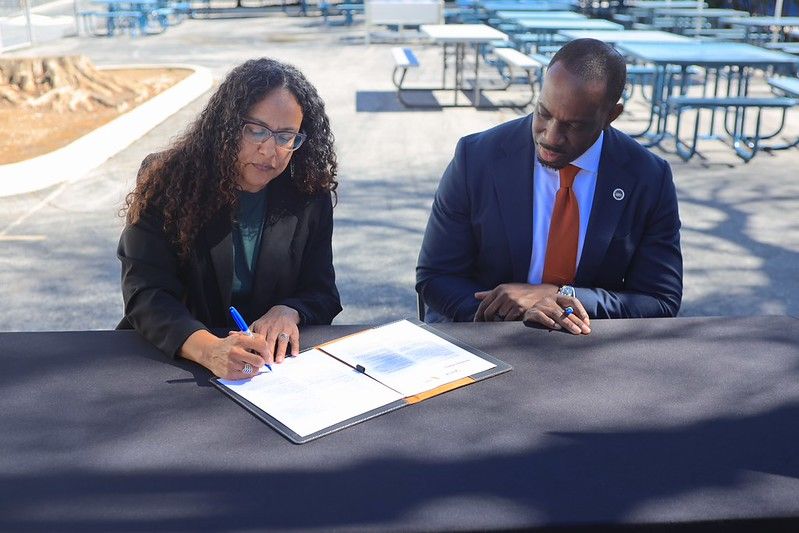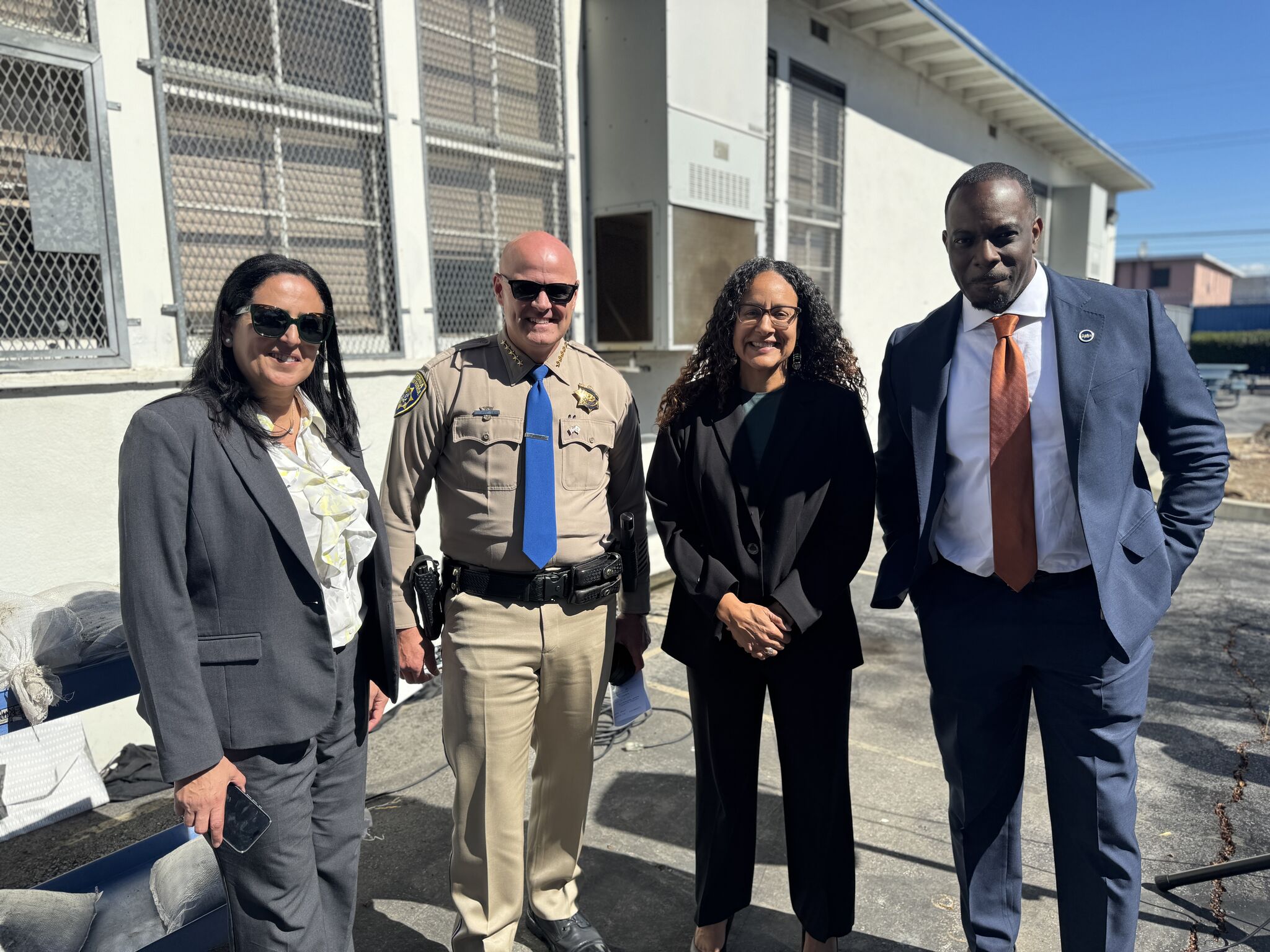Los Angeles — Key state partners joined together as California State Transportation Agency (CalSTA) Secretary Toks Omishakin, California Health and Human Services Agency (CalHHS) Secretary Kim Johnson and other state and local leaders unveiled a new statewide initiative to reduce severe traffic crashes in California’s highest-risk areas. The program launches with a new statewide policy on road safety and two designated safety corridors: Avalon Boulevard in Los Angeles and State Route 91 in southeast Los Angeles County.
Today, Secretaries Omishakin and Johnson signed the new Secretary’s Policy on Road Safety, committing California to a prevention-first, Safe System Approach to eliminate fatal and serious traffic injuries. Grounded in public health principles, the policy aligns agency decisions and investments to reduce exposure, crash likelihood and injury severity. It sets an interim goal to cut deadly and serious injury crashes by 30% by 2035 and reconvenes a cross-sector task force to develop a prioritized action plan. The policy embeds safety across departments—through design, operations, policy and investment—with a focus on equity and measurable, population-level impact.
In 2023 alone, there were approximately 3,600 fatalities and more than 14,000 serious injuries in California on all public roadways.
“The best road safety initiative is prevention, and this targeted corridor approach will save lives,” said California Transportation Secretary Omishakin. “By collaborating with local partners and using data to guide investments, we can better align transportation improvements with community safety needs.”
“Crashes are a preventable tragedy, and prevention begins long before someone gets behind the wheel. By bringing a public health lens to traffic safety, this partnership will allow us to address the root causes of harm and advance healthier, safer and more equitable communities,” said CalHHS Secretary Johnson.
The state has allocated $7 million to the Los Angeles Department of Transportation for safety upgrades along Avalon Boulevard. Crash data from 2019 to 2023 shows Avalon Boulevard, between Jefferson Blvd and 120th Street, experienced 122 fatal and serious injury crashes. These crashes resulted in a total of 21 fatalities and 115 serious injuries.
“We’ve taken action to make streets safer and the City has added miles of protected bike lanes, upgraded bus boarding stations, more crosswalks, pedestrian beacons and other safety infrastructure to help people safely walk, bike, roll and drive on the highly-traveled Avalon Boulevard,” said Los Angeles Mayor Karen Bass. “This partnership with the State will help us double down on our investments.”
More than $191 million is also being invested in operational and safety improvements along State Route 91, spanning from Vermont Avenue to the Orange County line. Additional safety corridor locations are under review.
The initiative’s comprehensive approach combines infrastructure, engagement and policy innovation to create safer, more connected corridors. Planned improvements may include:
- Safe Crossings and Intersections: High-visibility markings, upgraded signal timing and redesigned intersections to reduce conflict points and improve pedestrian safety
- Connected Mobility Options: Infrastructure to support safe walking, biking and transit access for all users
- Education and Engagement: A new SLOWCAL social media campaign will promote awareness and community involvement.
- Law Enforcement Partnerships: Where welcomed by communities, law enforcement will support safety efforts based on local priorities.
- Speed Management: Tools such as automated speed safety cameras will help promote safe driving speeds.
California analyzed crash data across all public roads, including state highways, city streets and county roads. Corridor selection was guided by UC Berkeley’s SafeTREC using a High Injury Network methodology applied to crash data over five years (2019–2023). Sites were prioritized based on crash severity, context and the readiness of project partners. To view the corridor fact sheets for more information, visit the CalSTA website.
Progress will be measured by reductions in fatal and serious injury crashes. Leading indicators such as vehicle speeds, conflict points and telematics data (including braking and acceleration patterns) will help identify risks early and guide proactive adjustments.
For more information on California’s infrastructure investments, visit build.ca.gov.
# # #




